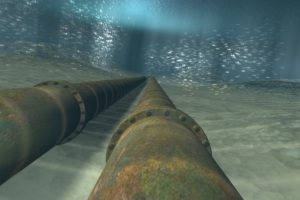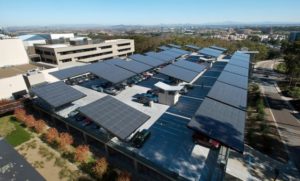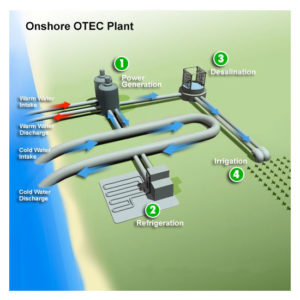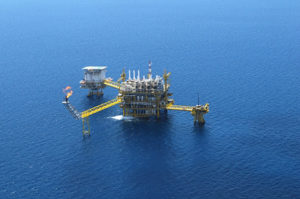Past Projects
 Seawater Air Conditioning (SWAC)
Seawater Air Conditioning (SWAC)
About 20 years ago, Makai Ocean Engineering developed an Excel-based computer model capable of carrying out conceptual design, cost estimation, and feasibility study support for deep seawater-based district cooling systems. Since its inception, the model has been used for every phase of system design from initial feasibility study through creation of final drawings and specifications.
As of 2013, the Excel-based computer model could no longer meet Makai's growing analysis needs. Working as a part of Makai's engineering team, Steven Rizea was a lead engineer in the development of an all-new model coded in object-oriented MATLAB. The new model leveraged AutoCAD and Microsoft Excel as Graphical User Interfaces (GUI) for district cooling system layout and parameter input. It included modules to analyze cutting edge cooling technology, chilled water storage, daily and monthly load variability, and life-cycle cost optimization.
The completed model was first used to analyze a district cooling system 3 times larger than anything tackled by the previous model. The new model made it possible to analyze a complex system more quickly and with less uncertainty that was previously possible. The model is still in use at Makai Ocean Engineering.
 District Cooling with Combined Heat and Power (CHP)
District Cooling with Combined Heat and Power (CHP)
The University of California at San Diego has a complex combined heat and power system that is tied into the school's district cooling system. Some of the steam produced by the CHP system is used to fuel steam-driven chillers that produce chilled water for campus cooling. Steven Rizea participated in a team that analyzed the feasibility of adding seawater air conditioning to the existing system. The team considered the effects of chilled water storage, diversion of steam from chillers to a turbine-generator, and daily variations in cooling demand. All products (steam, cooling, and electricity) were reduced to the monetary value the represented to the University, which allowed trade studies that minimized costs and maximized revenue.
 Ocean Thermal Energy Conversion (OTEC)
Ocean Thermal Energy Conversion (OTEC)
Ocean Thermal Energy Conversion makes use of the temperature difference between seawater on the surface of the ocean and cold seawater 1 kilometer underwater to produce power. It is a renewable energy source that can provide continuous baseload power not subject to the variability of wind and solar energy sources.
OTEC system design is complicated by a series of heavily interrelated parameters: total seawater flow, parasitic power required to pump seawater, cold water pipe diameter, and heat exchanger performance. The relationships among these parameters makes cost optimization of OTEC plants a major design challenge. Historical attempts at closed-form OTEC optimization schemes have been undertaken, but they invariably included assumptions that brought the final results into question.
Working on the OTEC engineering team at Makai Ocean Engineering, Steven Rizea was a lead engineer in the development of an Excel-based computer model (MOTEM - the Makai OTEC Thermodynamic and Economic Model) that simulated the entire OTEC process, including the power-producing thermodynamic cycle, heat exchangers, and seawater supply system. This model included a module that carried out a 7-dimensional optimization to minimize the capital cost of the OTEC plant. Since its inception, MOTEM has been used as the central design tool for a variety of OTEC feasibility and design projects.
 Airlift for Manganese Nodule Mining
Airlift for Manganese Nodule Mining
Deep Reach Technology is investigating the feasibility of collecting manganese nodules resting on the seabed more than 4 kilometers below the surface. The nodules are collected by robotic harvesters and delivered to a long vertical steel riser. The nodules are brought up the riser as a slurry, with the lift energy provided by an air lift system.
In air lift, compressed air is injected into the riser at about 1 kilometer depth. The air reduces the average density of the slurry and hydrostatic pressure drives it up the riser to the surface. Rizea Engineering created a computer model that analyzes the 3-phase flow (water, nodules, and air) to predict the nodule delivery rate for any given system design and air flow rate. The model allows optimization of system parameters to minimize the amount of energy required per ton of nodules delivered as well as investigation of the stability of the air lift system.
